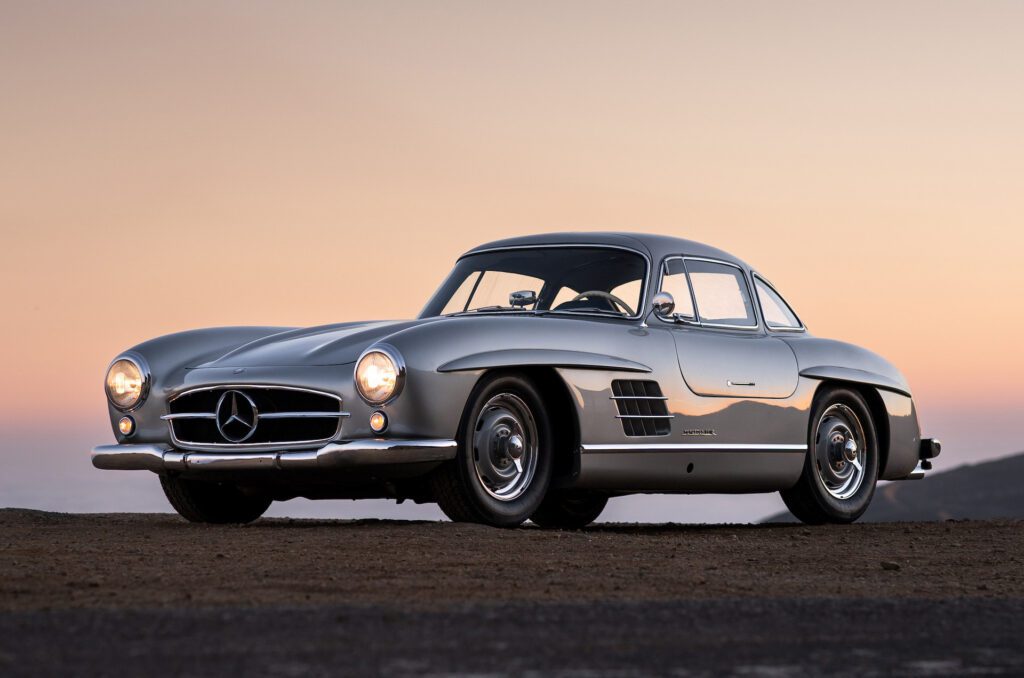
Mercedes-Benz 300SL Gullwing: Reviving Automotive Excellence
Introduction to Mercedes-Benz 300SL Gullwing
Brief history of the car’s creation:
- Origins in mid-1950s racing heritage
- Transition to a road-legal model
Design and Innovations
Unique features setting it apart:
- Distinctive Gullwing doors and their significance
- Innovations in aerodynamics and design
Performance and Engineering
Powerful engine specifications:
- Overview of the robust inline-six engine
- Notable performance metrics and capabilities Handling and suspension advancements:
- Technological strides in handling and suspension systems
Legacy and Impact
Influence on future supercars:
- Enduring influence on subsequent automotive designs Collector’s value and iconic status:
- Cultural significance and reverence among enthusiasts
The Revival of the Gullwing Legacy
Modern adaptations and tributes:
- Contemporary reimaginations paying homage Enduring appeal in the automotive world:
- Lasting relevance and admiration in the industry
Utilizing the “Mercedes-Benz 300SL Gullwing” keyword strategically throughout the content can optimize its search engine visibility while providing valuable and informative content for enthusiasts and automotive aficionados.
Mercedes-Benz 300SL Gullwing Feature:
| Engine Location : | Front |
| Drive Type : | Rear Wheel |
| Body / Chassis : | Aluminum body on tubular spaceframe |
| Production Years for Series : | 1954 – 1957 |
| Price : | $7,460 |
| Weight : | 2885 lbs | 1308.614 kg |
The Formula 1 safety car driver, Mayländer, commands attention as he maneuvers sleek machines like the Mercedes-AMG GT R or the Aston Martin Vantage during Grand Prix full course yellows. However, trailing Bernd along Switzerland’s winding Bernina Pass in a diesel-powered van painted a different picture. Bernd’s precise pacing allowed for a thrilling chase in the Mercedes-Benz 300SL Gullwing, creating captivating visuals that immortalized the experience.
Yes, Mayländer drove the Mercedes-Benz V220d carrying the photographer responsible for the stunning shots of the breathtaking Gullwing. This role was a temporary shift for the dynamic German, while I prepared to pilot the Gullwing for The International St. Moritz Automobile Week’s opening event, the Kilomètre Lancé, a 1.6-mile sprint at Engadin Airport. Meanwhile, Bernd would alternate between driving the unique 1938 Mercedes-Benz 540K Streamliner and the Sauber-Mercedes C9 sports prototype that secured second place in the 1989 24 Hours of Le Mans.
For many, the 300SL Gullwing stands tall among legendary cars, arguably being the inaugural modern supercar. Its dazzling performance and unmatched stylistic finesse set it apart, almost on a pedestal. Rooted in racing, it’s a direct descendant of the W194 coupe, crafted by the iconic Mercedes engineer Rudolf Uhlenhaut, celebrated for victories in grueling races like the 24 Hours of Le Mans and Mexico’s Carrera Panamericana. The W194-inspired complex tubular steel frame influenced the Gullwing’s unique doors, earning it the ‘Gullwing’ moniker.
An American connection adds depth to its history: the car’s concept was pitched by Mercedes-Benz’s American importer, Max Hoffman, during a 1953 Stuttgart board meeting. Hoffman’s conviction that affluent enthusiasts in America’s postwar boom would eagerly embrace a race-bred Mercedes-Benz resonated, leading to an order of 1,000 cars. True to his vision, 80% of the 1,400 Gullwings produced until 1957 found homes in America, including notable owners like actor Clark Gable.
Driving such an icon isn’t without its challenges. Initially, the 300SL feels formidable, especially considering its substantial value. Yet, familiarity with its quirks reveals a reminder of the immersive driving experience of yesteryears.
This particular Gullwing, one among Mercedes-Benz Heritage’s collection, boasts a rich history from enduring miles, evident through the seals from six Mille Miglia reruns dangling from the dash’s grab handle. Hence, the four-speed, all-synchromesh transmission produces audible noise in lower gears – first, second, and third.
However, the 3.0-liter, single overhead cam straight-six, equipped with Bosch mechanical direct injection, proves remarkably responsive and adaptable. Its 6,000 rpm redline, a feat for a six-cylinder street engine in 1954, propels the Gullwing impressively, hitting 44 mph in first, 75 mph in second, and an impressive 108 mph (the top speed of a 1954 Corvette) in third gear.
Given open autobahns, Mercedes permitted pushing the engine to 6,400 rpm in fourth, achieving 161 mph, solidifying the Gullwing’s status as the fastest production car of its time – a true supercar.
Supercar engineering has evolved significantly since the 300SL’s era of drum brakes and recirculating ball steering. Though heavy, the steering handles tight corners well, albeit with noticeable free play at center. The braking system, strong and responsive, coupled with well-placed pedals, facilitates heel-and-toe downshifts.
Driving the Gullwing at its limits was reportedly challenging, owing to its swing-axle rear suspension prone to unexpected mid-corner camber changes, further influenced by fuel movement in the 26.4-gallon gas tank behind the rear wheels. Yet, my experience wasn’t about attacking corners; the Kilomètre Lancé was a simple standing start acceleration run
check more about new cars on digital orionix.